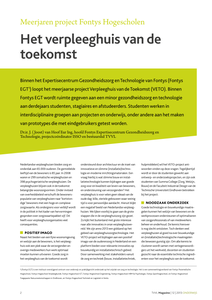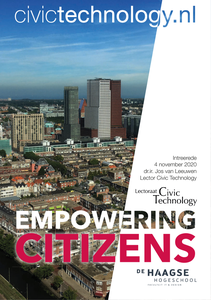Rationale In order to prevent sarcopenia in community dwelling older adults a higher daily protein intake is needed. A new m-health strategy for dietary counseling was used with the aim to increase total daily protein intake to optimal levels (minimal 1.2 g/kg/d, optimal 1.5 g/kg/d) through use of regular food products.Methods The VITAMIN (VITal AMsterdam older adults IN the city) RCT included 245 community dwelling older adults (age ≥ 55y): control, exercise, and exercise plus dietary counseling (protein) group. Dietary intake was measured by a 3d dietary record at baseline and after 6 months intervention. In total 173 subjects were eligible for analysis. A two-way mixed ANOVA with time, group, and time*group interaction was performed. Post-hoc Bonferroni was performed with significance level at p<0.05.Results Mean age of the subjects was 72.1±6.3, with a BMI of 25.7±4.2 of which 68% were females. ANOVA revealed significant effect of time, group and time*group (p<0.001). Table 1 shows higher protein intake over time in the dietary counseling group than either control (p=0.038) or exercise (p=0.008) group. Additional analyses revealed no change in vegetable protein intake. The higher protein intake was fully accounted for by animal protein intake. In the dietary counseling group 72% of subjects increased protein intake above the minimum intake level.Conclusions This study shows digitally supported dietary counseling improves protein intake sufficiently in community dwelling older adults. Protein intake increase by counseling with m-health is a promising strategy for dieticians with the upcoming rising ageing population.Keywords: Aging, Sarcopenia, Functioning, Nutrition, Technology
DOCUMENT
In de rapportage over het deeltijdonderwijs van De Haagse Hogeschool is gekozen voor een beschrijvende benadering op tal van aspecten van dit onderwijs. Zo komen ondermeer aan de orde: doelgroep, onderwijsaanpak en studiesucces, begeleiding, personeel, organisatie, financiën, en ook communicatie en marketing van de deeltijd. In korte tijd heeft de onderzoeker een veelheid van informatie verzameld en is zij erin geslaagd dit toegankelijk te ordenen. Op elk van de onderzochte aspecten worden gegevens gepresenteerd die aanleiding kunnen vormen om op zoek te gaan naar verbetering van het deeltijdonderwijs. Het geheel overziende valt een aantal zaken op. In kwantitatief opzicht is sprake van 21 deeltijdopleidingen die op dit moment samen een aandeel van 14% hebben in de studentenpopulatie. Het deeltijdonderwijs kent daarmee een forse terugloop. Zo was een vijftien jaar geleden nog 40% van de studenten van De Haagse Hogeschool deeltijder. In kwalitatief opzicht valt op dat het deeltijdonderwijs een sterk academiegebonden beleid kent. Elke academie heeft zo haar eigen visie op elementen als instroom, onderwijsaanbod, werving en acquisitie. Ook laten de academies flinke verschillen in ambities zien. Al met al maakt de rapportage overduidelijk dat er een grote kloof bestaat tussen de praktijk van het deeltijdonderwijs en de beleidsambitie van De Haagse Hogeschool. Immers de aanleiding voor het uitgevoerde onderzoek was de vraag: hoe profileren we intern en extern De Haagse Hogeschool niet alleen als voltijd, maar ook als deeltijd school? Op basis van de verzamelde gegevens worden in het rapport uitgebreid aanbevelingen gedaan voor een sterkere profilering van De Haagse Hogeschool op het gebied van deeltijdonderwijs.
DOCUMENT
Mediawijsheid staat niet op zichzelf, er is sprake van een generatiekloof. Dat stelt Bart Wernaart, lector Moral Design Strategy bij Fontys Hogeschool Economie en Communicatie (FEC). “Ik heb een redelijk groot vertrouwen in het techno-morele kompas van onze studenten.”
LINK
Technologie & toepassing, praktijkgericht programma en de nieuwe leerweg zullen voor velen onbekende begrippen zijn. Toch zullen deze effect hebben op de grootste groep jongeren in het voortgezet onderwijs. Tijd voor uitleg.
DOCUMENT
Er is behoefte aan mensen die bijdragen leveren aan de ontwikkeling van technische producten en processen. Onderwijs heeft de opdracht de technische geletterdheid van leerlingen te ontwikkelen en te zorgen dat ze zich prettig voelen bij het hanteren van techniek. Deze studie focust op de bijdrage die Mindtools hieraan leveren. Mindtools zijn op ICT gebaseerde leermiddelen die samenwerkend constructivistisch leren en hoger-orde (kritisch en creatief) denken stimuleren. Het begrip Direct Manipulation Environments (DME's), een subklasse van Mindtools, kenmerkt concrete leermiddelen zoals de microwerelden "Lego Mindstorms" en "Techno Logica". Deze microwerelden functioneren op basis van een materieel technisch model dat direct via een computer¬programma bestuurd wordt en taken kan uitvoeren (robots). De leertaak voor de leerling kan zich bewegen op het continuüm van het zelf programmeren van een kant-en-klaar materieel model dat bepaalde taken moet uitvoeren tot en met het zelf bedenken, bouwen en programmeren van een dergelijk model dat een of meer taken kan uitvoeren. Op grond van eerder literatuuronderzoek en een casestudie veronderstellen we dat het educatief toepassen van DME's bijdraagt aan de ontwikkeling van de technische geletterdheid van leerlingen. Hoewel definiëring van technische geletterdheid meer aandacht vraagt, zijn de volgende drie dimensies voor onze analyses bruikbaar gebleken: inhoud (zoals feiten, concepten, voorschriften), praktijk (het handelen, het materiële, doen en realiseren) en de cognitieve dimensie (denkvaardigheden en denkhoudingen). Het is aannemelijk dat door het toepassen van DME's domeinspecifieke concepten en kennis ontwikkeld wordt. Het denken van leerlingen is gekoppeld aan contexten en taken en moet niet geïsoleerd worden bestudeerd. We concentreren ons in deze studie vooral op onderzoek naar de dimensie van de denkvaardigheden en denkhoudingen (het denken van leerlingenduo's bij het oplossen van een probleemtaak) door het analyseren van de verbale interactie op kenmerken van kritisch - en creatief denken. Er is gebruik gemaakt van een Techno Logica leeromgeving bestaande uit een computer met software, een interface, bestuurbare materialen zoals lampjes en motors, en een zelfinstructie handleiding. Twee in complexiteit toenemende probleemtaken, ieder gebaseerd op een kant-en-klaar materieel model (Verkeerslicht en Reuzenrad), zijn gebruikt om de leerlingen besturingen te laten ontwerpen en testen. Dit proces werd op video opgenomen. We veronderstellen dat Techno Logica een bruikbare Mindtool is wanneer werken ermee bijdraagt aan technologische geletterdheid, in de zin dat er sprake is van probleemoplossen en hoger orde denken. Om dit te operationaliseren ontwierpen we een gestructureerd observatie-instrument op basis van het IOWA Integrated Thinking Model en de theorie over denkhoudingen (Costa, 2000). Hiermee werd het voorkomen en de diversiteit van denkvaardigheden en denkhoudingen in de verbale acties en interactie gescoord. Op basis van onze waarnemingen concluderen we dat veel interactie en handelen eerder geduid kan worden als uitingen van denken dan trial and error. Er zijn indicaties dat de leeromgeving en probleemtaken leiden tot ontwikkeling van expertise waardoor een nieuwe (moeilijkere) probleemtaak efficiënter en effectiever opgelost wordt. We vragen we aandacht voor de rol van de docent. We ervaren immers dat nieuwe leermiddelen niet gemakkelijk geadopteerd worden door leerkrachten.
DOCUMENT

Hoe kan technologie mensen met een verstandelijke beperking motiveren om meer te bewegen in het dagelijks leven? Het onderzoeksprogramma TIME2Play van het lectoraat Technologie voor Inclusief Bewegen en Sport van de Haagse Hogeschool bundelt initiatieven die dat op een speelse en uitdagende manier doen, van beweeg-digiboards tot apps.
DOCUMENT

Het lectoraat Media & Entertainment (nu Media Business) heeft in opdracht van P60 en de branchevereniging VNPF een tweeledig onderzoek verricht. Daarbij was het doel enerzijds een aansprekende casus te presenteren bij de masterclass op de Noorderslag/Eurosonic conferentie en anderzijds heeft het lectoraat onderzocht of en hoe de gehanteerde programmeringsstrategie van P60 bijdraagt aan het behalen van de geformuleerde doelstellingen in het beleidsplan 2010-2014.
DOCUMENT

Binnen het Expertisecentrum Gezondheidszorg en Technologie van Fontys (Fontys EGT1) loopt het meerjaarse project Verpleeghuis van de Toekomst (VETO). Binnen Fontys EGT wordt ruimte gegeven aan een minor gezondheidszorg en technologie aan derdejaars studenten, stagiaires en afstudeerders. Studenten werken in interdisciplinaire groepen aan projecten en onderwijs, onder andere aan het maken van prototypes die met eindgebruikers getest worden.
DOCUMENT

De bacheloropleidingen Verpleegkunde in Nederland staan voor de uitdaging het nieuwe beroepsprofiel Bachelor Nursing 2020 te vertalen naar het onderwijs. Een deel van het nieuwe curriculum gaat over de inzet van eHealth. In dit document worden 14 verpleegkundige beroepstaken omschreven waarbij eHealth wordt ingezet. Beschreven wordt welke kennis, vaardigheden en houding van een verpleegkundige worden gevraagd om elke eHealth-taak zelfstandig uit te voeren. Elke taak wordt gekoppeld aan kernbegrippen van Bachelor Nursing 2020 en aan relevante CanMEDS-rollen.
DOCUMENT

In ons dagelijkse leven hebben we veel met technologie te maken, vaak met interactieve, informatie-gerichte technologie: als consument doen we online boodschappen – zeker in deze pandemische tijd; als reiziger in het openbaar vervoer plannen en betalen we onze reis met interactieve technologie – nu weliswaar even wat minder; als weggebruiker navigeren we op basis van technologie; en ons energieverbruik in huis wordt ‘smart’ gemeten en geadministreerd. Als burger staan we steeds vaker middels technologie in contact met overheden. Denk aan alle online communicatie met de overheid, zo als de belastingdienst en gemeenten die middels apps, websites en de ‘Berichtenbox’ van ‘MijnOverheid’ met burgers communiceren. En er wordt over burgers en ons gedrag al heel wat data verzameld, door gemeenten, de politie, door bijvoorbeeld de zorgsector. En ook in de publieke ruimte wordt data verzameld – met smart city technologie, zoals camera’s en sensoren – met als doel om de stad veiliger, efficiënter en leefbaarder te maken. Al die ‘big data’ maakt het mogelijk om inzichten te genereren – al dan niet met kunstmatige intelligentie – en besluiten te nemen. We gebruiken technologie ook om als burger zelf actie te ondernemen. Bij de overheid kunnen we met apps melden wat er op straat verbeterd of onderhouden moet worden. Met onze buren zitten we in een WhatsApp groep of NextDoor, om bij te dragen aan de leefbaarheid en veiligheid van de buurt. We kunnen met smart home tools of citizen science kits de luchtkwaliteit meten, binnenshuis, maar ook buitenshuis. We tekenen petities, doen mee aan peilingen en enquêtes. En social networking sites (SNS) worden intensief gebruikt, voor sociale en professionele relaties, maar ook om maatschappelijk actief te zijn, voor het organiseren van het samenleven in een buurt. We weten inmiddels dat social media ook een effectief kanaal zijn om de democratie te beïnvloeden. Burgers komen dus in aanraking met veel verschillende technologieën, met verschillende doelstellingen, resultaten en bijeffecten, en waaraan mensen in allerlei functies en rollen deelnemen. Wat centraal staat in het vakgebied Civic Technology is dat de technologie in dienst staat van het burgerschap.
DOCUMENT
